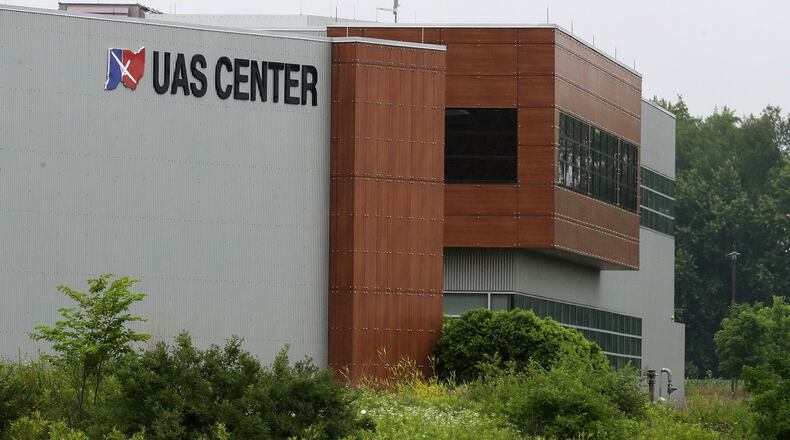MORE: Springfield Airport tapped to test new drone technology
The Springfield center is already involved in various projects, but the state has not previously had specific long-term plans laying out how to make sure Ohio serves as a hub to draw business and investment and commercialize the technology, said Erica Hawkins, a spokeswoman for DriveOhio.
“There is so much opportunity in (Unmanned Aerial Systems),” Hawkins said. “We’ve never really sat down to think about what are our opportunities and how do we best direct our resources.”
A 2013 report from the Association for Unmanned Vehicle Systems International predicted that over the next 10 years, the unmanned aircraft market is expected to be a $114 billion industry nationally, with a potential to create 100,000 jobs over the next decade.
RELATED: $5M investment at Springfield airport to research unmanned aircraft
The strategic plan includes three initiatives. FlyOhio will focus on testing technologies that allow drones to fly safely at altitudes below 2,000 feet, which is important for businesses that look to use drones to transport packages, for example. Some of that work is already taking place in Springfield.
The News-Sun has previously reported the Air Force Research Laboratory is working toward Federal Aviation Administration approval to allow research into detect and avoid technology in airspace surrounding the Springfield-Beckley Municipal Airport. The AFRL and Ohio have each invested $5 million into a project to test unmanned aerial vehicles beyond the line of sight.
DETAILS: Springfield test center gets OK for drone projects
DriveOhio will also use drones to monitor traffic and road conditions along the 33 Smart Mobility Corridor, a stretch of highway between Dublin and East Liberty.
“The Ohio UAS Center has been at the forefront of unmanned flight testing and operations, and this plan lays out our strategy to continue our leadership role in advancing this country’s smart mobility operations to the sky,” said Fred Judson, managing director of the UAS Center.
A second priority included in the plan calls for DriveOhio to work with business and education entities to boost workforce development and create more training opportunities to develop a workforce for the growing industry. The third priority calls for putting drones in use for a variety of state and local government projects, including collecting data for bridge inspections, traffic monitoring and geographic mapping.
“Ohio is already systematically using unmanned aircraft to support a broad range of business operations,” the strategic plan says. “Project surveying, infrastructure inspection, project monitoring, environmental survey, resource survey, corrections facility surveillance, police and firefighting support are among a few of the areas where Ohio is putting unmanned aircraft to work in support of state and local government operations.”
The strategic plan is more than just improved marketing, said Tom Franzen, assistant city manager and director of economic development for Springfield. One of the benefits of having a variety of resources in and around Springfield is the possibility that as companies conduct testing here, they’ll also look at opportunities for manufacturing and prototypes for new products in the region.
At the same time, Franzen said the strategic plan makes it more clear to potential businesses the kind of work that is taking place in the area. For example, AFRL research for a ground-based detect-and-avoid radar system means one thing to the military, he said. But marketing the work as SkyVision and explaining the work includes developing an infrastructure to allow drones to fly safely below 2,000 feet may create more clarity for businesses.
“That’s important as we appeal to the commercial sector for opportunities in the future,” Franzen said.
One of the goals of developing a strategic plan is to clarify the work Ohio is already doing, both for the public and for businesses interested in testing or developing new products tied to the industry, Judson said. It’s also possible some companies could relocate to Ohio to conduct testing, leading to some local investment, he said.
“This is the road map to make sure we’re on track to try to communicate to everybody what we do here,” Judson said.
The Springfield UAS Center will likely be the center for most of the state’s efforts to develop drone technology for the foreseeable future, Hawkins said.
“The concentration of resources available in Springfield is not available anywhere else,” she said.
About the Author
